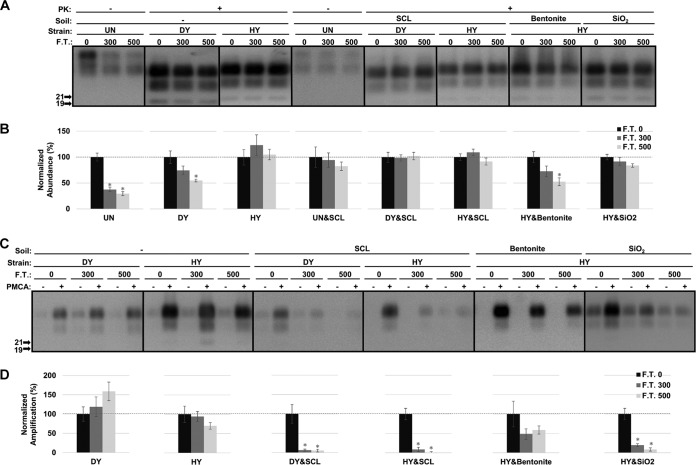FIG 1.
Abundance and PMCA conversion capacity of hydrated hamster PrPSc are reduced after repeated freezing and thawing. (A and B) Western blot analysis (A) and quantification (B) of hydrated brain homogenate from either uninfected hamsters (UN) or hamsters infected with HY or DY TME before (0) and after 300 or 500 cycles of F.T. in both unadsorbed and soil-adsorbed forms. UN&SCL, uninfected samples bound to SCL; DY&SCL, DY PrPSc bound to SCL; HY&SCL, HY PrPSc bound to SCL; HY&Bentonite, HY PrPSc bound to bentonite; HY&SiO2, HY PrPSc bound to SiO2. (C and D) Western blot analysis (C) and quantification (D) of PMCA reactions seeded with hydrated HY or DY before (0) and after 300 or 500 cycles of freezing and thawing in both unadsorbed and soil-adsorbed forms. Samples were subjected to one round of PMCA (two rounds for SCL-adsorbed DY and bentonite-adsorbed HY to obtain a detectable signal). The abundance and amplification of treated samples (F.T. 300 and 500) were normalized to the untreated control (F.T. 0). All samples were digested with PK except uninfected samples (UN and UN&SCL). Error bars represent standard errors of the means. Asterisks indicate significant difference between treated and untreated samples (n = 6; P value of <0.01).

